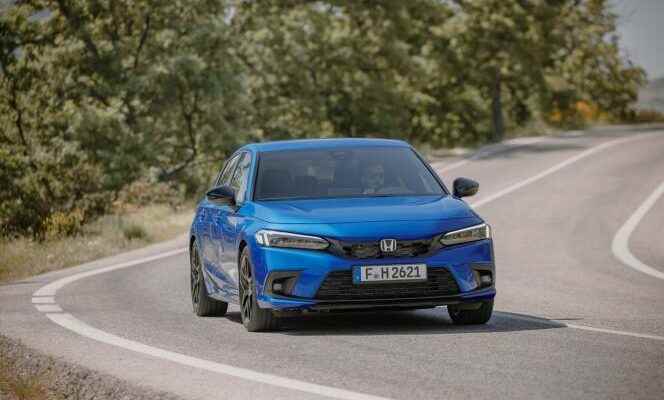Honda, which has just risen to second place among Japanese manufacturers and has long since made a name for itself on the American market but also on the Chinese market, has become a marginal brand in Europe, where it does not exceed the bar of 1%. This has not altered the notoriety of its models, in particular the Civic, which is celebrating its 50th anniversary with a new generation, the eleventh. Over time, this car has distanced itself from its urban vocation and has moderated its outbursts of originality. The new version, which comes in the form of a classic style wagon without being a master key, is the reflection of an electrification strategy undertaken with moderate enthusiasm.
With the new Civic, the Japanese firm now has a range (Jazz, Civic, H-RV, CR-V and Honda e) fully electrified, but essentially confined to self-charging hybrids, just like its great rival Toyota. This brand of engineers, which has built its reputation on the excellence of its internal combustion engines, thanks in particular to its VTEC variable timing system and muscular models like the Civic Type-R, is clearly not going to be happy. heart in the all-electric.
The Civic testifies to an ambition, that of exploiting all the possibilities which would make it possible to delay the end of the internal combustion engine. This model combines two electric motors with a two-litre four-cylinder, in order to develop a power of 135 kilowatts (184 horsepower), but its operation favors energy of electric origin, solicited at more than 85% in the city and near 15% on the road. The heat engine, used almost exclusively to power the generator, adapts its speed to deliver the amount of electrical energy needed at the right time.
A base price of 32,400 euros
At the wheel, this so-called “e: HEV” technology, which uses a small 1.05 kWh buffer battery, provides instant revving, with a feeling of natural acceleration thanks to a little trick: the absence of a gearbox. conventional gears is masked by the programming of simulated gear changes. The traditional – and largely useless – tachometer is advantageously replaced by an indicator of the power delivered, expressed as a percentage. We will especially remember that the Honda fashionable hybrid consumes little. The weighted average displayed on the technical sheet is 4.7 liters, a realistic threshold, if we are to believe the averages recorded during our test.
You have 43.52% of this article left to read. The following is for subscribers only.
